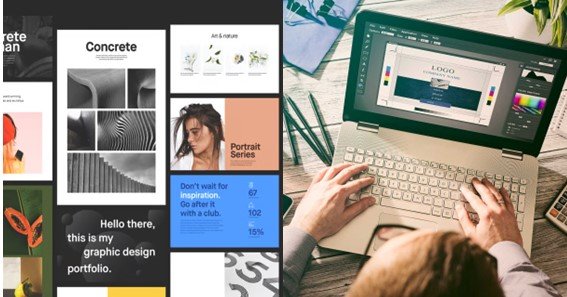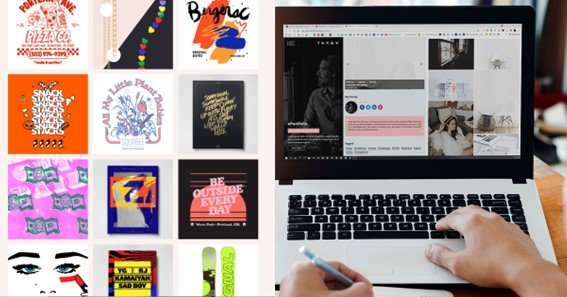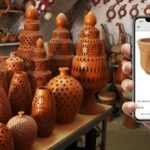As a graphic designer, having an online portfolio is critical for showcasing your talent and landing new clients or job opportunities. Knowing how to create a portfolio website for graphic designers is more than just putting together a few examples of your work. Your portfolio should reflect your skills, creativity, and personal brand while providing a user-friendly experience for potential employers or clients. In this guide, we will walk you through the key steps to building a stunning portfolio website.
Why You Need a Portfolio Website for Graphic Designers
A portfolio website for graphic designers is your digital business card. It’s where you display your expertise, showcase your best projects, and communicate your personal style. Whether you’re a freelancer or working for an agency, having an online portfolio helps you stand out in a competitive market. With the right approach, your portfolio can serve as a powerful tool to attract new business or employment opportunities.
Steps to Build a Graphic Design Portfolio Website
1. Choose a Platform and Domain Name
The first step in graphic design online portfolio creation is selecting a platform to build your website. Popular options include WordPress, Squarespace, Wix, and dedicated portfolio builders like Behance or Adobe Portfolio. After selecting the platform, choose a professional domain name, ideally one that includes your name or brand.
2. Select the Right Template
Many platforms offer portfolio website templates that are easy to customize for graphic designers. Look for a template that reflects your style but also offers easy navigation and a clean layout. Make sure the design is flexible so you can update it as your portfolio grows.
3. Focus on User-Friendly Portfolio Website Design
An important aspect of how to create a portfolio website for graphic designers is ensuring it’s user-friendly. Your website should be easy to navigate, with intuitive menus and clearly labeled sections. Consider adding a search bar to help visitors quickly find specific projects or categories of your work.
4. Showcase Design Work Online
Your portfolio should highlight your best and most recent work. Choose a diverse range of projects to show the breadth of your skills, from logo designs and branding to web designs and illustrations. Showcase design work online in a visually appealing way, including high-quality images and descriptions that explain your design process.
5. Use Responsive Design
A responsive portfolio for graphic designers ensures that your site looks great on all devices, whether it’s a desktop, tablet, or smartphone. Most modern website builders offer responsive templates but always double-check how your portfolio looks on different screen sizes.
6. Include Graphic Design Project Presentation
Each project should have its own dedicated page that highlights the challenge, your process, and the outcome. A graphic design project presentation is important to show potential clients or employers how you approach problems and develop solutions. Use visuals to tell the story of each project, from sketches to the final product.
7. Optimize for SEO and Performance
To attract more visitors, make sure your website is optimized for search engines. Use appropriate keywords such as “graphic design portfolio,” “freelance graphic designer,” and “visual designer.” Also, optimize your images for faster loading times, as a slow website can deter potential clients.
8. Provide Contact Information and Call to Action
Ensure your contact information is easily accessible. Include a contact form or email address, and encourage visitors to get in touch. You can also add a call to action on each page, inviting visitors to inquire about your services or request a quote.
Best Portfolio Websites for Designers: Key Examples
Some of the best portfolio websites for designers serve as an inspiration for their clean layouts, creative use of visuals, and functionality. Platforms like Behance, Dribble, and personal portfolio sites created on WordPress or Squarespace showcase the work of top designers worldwide. Studying graphic designer website examples can help you refine your own site.
FAQ
1. Why do graphic designers need a portfolio website?
- A portfolio website helps graphic designers showcase their work, attract potential clients, and differentiate themselves from competitors. It serves as a digital resume and business card.
2. How can I create a user-friendly portfolio website?
- Ensure your website has clear navigation, intuitive design, and is easy to browse. Choose a clean template and focus on a user-friendly portfolio website design to improve user experience.
3. What should be included in a graphic design portfolio?
- Your portfolio should include a variety of projects that showcase your skills, creativity, and design process. Highlight your best work with detailed project presentations, including visuals and descriptions.
4. What is a responsive portfolio for graphic designers?
- A responsive portfolio is designed to be functional and aesthetically pleasing on all devices, from desktops to smartphones. This ensures that visitors have a seamless experience regardless of how they access your website.
5. How do I make my graphic design portfolio website stand out?
- Focus on high-quality visuals, unique design elements, and a professional layout. Make sure to optimize the site for SEO, use a responsive design, and provide clear information about your services.
Building a stunning portfolio website takes time and effort, but with the right platform, template, and content, you can create an online presence that reflects your talent and attracts potential clients or employers. Follow these steps to build a portfolio website for graphic designers that not only showcases your work but also helps you stand out in a crowded market.











